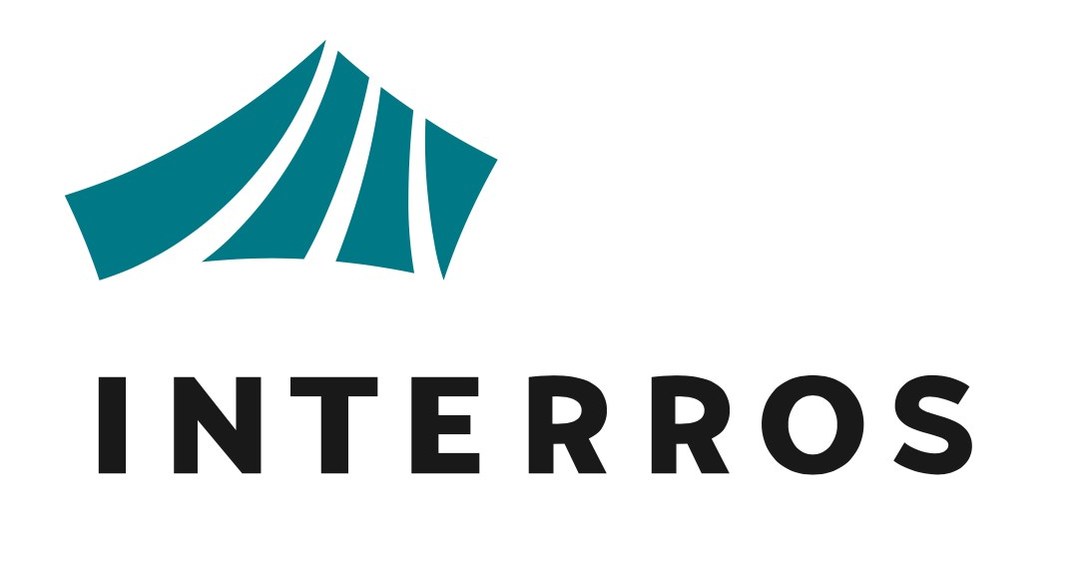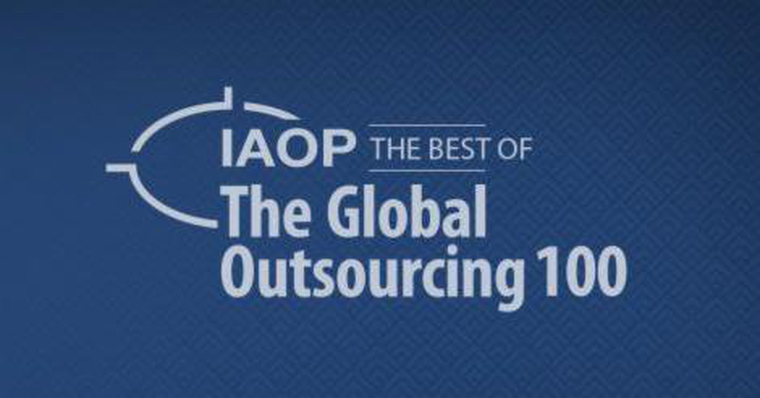Digital Transformation is rapidly moving from a beautiful concept to practical and consistent transformations taking place in companies. These transformations dramatically change the existing concepts about the business relationships of traditional partners when implementing important IT projects: client – consultant – vendor – integrator. Evgeny Mineev, Executive Director of Reksoft, told TAdviser how new formats of business partnerships emerge.

About a new type of partnership
— On Reksoft’s corporate website information about the digital transformation is currently available in the Services section. Do you think that such a complex process can be outsourced?
— Let’s clarify, we are not talking about traditional outsourcing, of course. It is rather a story of creation of long-term partnerships and teamwork. In general, the essence of teamwork remains the same, but its format changes.
— Where does this teamwork originate: at the level of a corporate business development strategy or technological modernization?
— In Reksoft’s understanding, digital transformation is not so much about the enterprise management system but rather corporate culture. Why is that?
Digital transformation is primarily an opportunity to significantly change the very paradigm of an enterprise performance. Some time ago, IT had gone far beyond being service departments, mastered the niche of corporate governance and became full-fledged business partners capable of having a big impact on the efficiency of business. Digital transformation is a new phase of IT becoming an essential part of business which implies major changes. In particular, an important part of the company’s activities is the constant launch of internal startups, which are integrated in business processes and bring profit. And this means a different risk appetite, different employee management processes, and etc. In other words, first of all, the corporate culture is changing.
Of course, there is no such service in our portfolio – we will come to you and establish a corporate culture. But naturally, while introducing the new business processes, the culture of the enterprise inevitably changes.
— How is this expressed?
— I will offer an example of our important client – a large company operating in the field of fuel sales. In my opinion, they are doing serious work on the digital transformation of their business. At the moment when our cooperation began – five years ago, it was a classic large company: a strict and solid style, both the interior of offices and the dress code, and even in terms of project launch. But the main change associated with the launch of the digital transformation program in the company is not that there are now more employees who look and communicate like IT specialists. A lively startup atmosphere in which new services are launched seems to prevail, they develop a lot themselves or manage projects. The changes took place in record time. And we became one of the partners who took part in the process of creating such an Agile center.
— Is a business solution always enough to implement the required process on their own?
— It is very difficult to implement the transformation internally using your own resources. In many cases, it is easier to do this together with a partner who acts as a catalyst, a driver helping the organization to set out a new vision of how to do business. And then the question is completely within the area of responsibility of the company’s management: to support new processes, analyze the results, evolve further or not.
— Do you need to get into the shoes of a CIO to become a transformation driver?
— An IT company is always an assistant for internal IT and delving into a project is necessary. The insourcing trend is visible on the market today – many enterprises try to develop software inhouse. There is an explanation for this. Firstly, there is clearly a need for digital transformation: if a company cannot offer digital products, it will eventually lose market share. Secondly, the importance of control is growing: when a business is digitizing, it is essential to understand how all this digital production works, what risks it entails, and, of course, it is a natural reaction to hold a critical component of the business closer. Practice has shown that after the initial period of reflection, companies abandon the 100% insourcing model because It is extremely difficult to build a full-cycle IT product company, while competing for specialists on the IT market.
Full-fledged insourcing is the way large organizations move. Smaller companies do not have the scale and resources to spin the flywheel of insourcing. After all, this is a real industrial production of a software product.
From this point of view, we are interested in a client having a strong team. Moreover, if our customer for one reason or another lacks, for example, product owners in a team, we will strive to help find such people on the market and hire them, rather than fill the niche ourselves. It is beneficial for us if the key part of software products development and production will be in the hands of the client.
— Do you think this model finds a ready market?
— We do not assume,we know it for sure. The fact is that at some point we discovered that a significant share of Reksoft’s projects are the ones I mentioned above – not serving IT systems such as ERP, but innovative products and services that now make up the key part of our customers’ business and make it unique. Simply put, this is not BI analytics, but a marketplace. And this inevitably led us to the business consulting niche.
About different types of digital transformation consulting
— What is the level of this consulting? When implementing digital transformation projects, do you need all types strategic, management, IT consulting?
— We are definitely not aiming for the role of PwC or McKinsey. We specialize in transforming big business strategies into specific digital programs and solutions. In other words, we start working when it is already clear in which direction to move and what needs to be done, when it is necessary to design proper processes so that company works quickly, efficiently and flexibly.
When developing any digital strategy, there is a large important part related to testing various hypotheses and developing an MVP. And before that you need to audit information systems and decide what to do with them: phase out of the existing applications, transfer them for external support, integrate with other systems, etc.
We also audit things related to processes. This is especially important for software production. If a company has a history, then most likely it has come to the stage of digital transformation with a burden in the form of processes that have been evolving unsystematically for many years, with the layering of information systems. These legacy systems need to be assembled into a single system and the wings adjusted so that the Time-to-Market parameter takes off. We are engaged in such projects.
In other words, our company combines two focus areas, the first is working with the existing business strategy – its decomposition into separate action plans; the second is the development of digital products and services that the customers demand. We have a closed technology stack to implement a system that allows us to create a single source of truth for a client: starting from strategic goals to full-fledged information systems. These are tools for managing the development processes that allow us to analyze the whole picture from different angles.
About the principles of internal digital products development and the attitude to low-code
— When talking about the development of digital products, we immediately want to ask about low-code. Do you use it?
— You know, low-code platforms, of course, simplify the development, but there is the flip side – the loss of flexibility. Simplification takes place on the basis of a specific platform, and you are given ready-made components/features from which you can assemble something yourself. Everything is fine as long as you do not go beyond the ideas the platform developer laid down. Low-code, in my opinion, has a fairly narrow scope of application, let’s just say, it is used as a rapid prototyping tool. If you need to quickly launch some standart/generic solution, then it probably makes sense to use low-code. But if we are talking about a unique development, know-how, then it is crucial to differ from the standard products. And then low-code is not suitable, you need to do your own development. I do not suggest writing code from scratch, you need to go down to a lower level in the technology stack and use Open Source solutions that initially contain flexibility. At the same time, we use Mendix in a number of our projects, but this is far from a silver bullet.
About the digital transformation system architecture
— If a choice is made in favor of inhouse digital products development, then the question of the system architecture inevitably arises. Do you bring it with you to a project for a client?
—Yes, we develop the digital transformation enterprise architecture stack. It makes it possible to take all the existing IT systems of a client, decompose them into processes and understand how the systems interact with each other, determine what is redundant etc. It is no secret that over time many organizations create zoos of IT systems, and our expertise in corporate architecture allows us to recreate the internal logic of ongoing processes and understand what is worth developing further, what to slow down, and what makes sense to abandon altogether. This is how we worked with Otkritie Bank after B&N Bank absorption. As a result of a six-month project, out of more than 700 IT systems and services, it was recommended to maintain 215 for further development.
Once the overall architecture is defined, we use our own SkillFlex framework to organize the development of digital products. It is the result of numerous startup projects that are a mixture of design and product development. This is what happens most often during digital transformation. In fact, if a company is simultaneously implementing several software development projects, SkillFlex allows to control the logic of the entire process.
Let me give you a simple example. Often when working on a project there is an exchange of project files or Excel spreadsheets with the status of tasks by email. In this situation, SkillFlex is definitely needed, because any project file becomes outdated exactly at the moment when the button “send” is pressed. In other words, SkillFlex is a tool for bringing all software development processes into a single system so that, on the one hand, the process is end-to-end from business requirements to specific lines of code, and, on the other hand, it could be controlled in terms of supplies, budgets, resource planning. Then we and the customer at any time have an understanding of the current status of the project, and this does not require additional manual work from the project participants.
Next comes the technology layer which helps the client decide on the technology stack to be used. Here, in recent years, microservice platforms played a key role. And then there are specific projects. This can be a migration, integration or replacement accompanied by a transfer to a single digital platform. As a result, the customer is able to quickly bring new digital products to the market.
In general, a new digital structure of the enterprise is being created with the support of an appropriate technological stack.
About integration with ready-made platforms and systems
— Do you support integrations with ready-made platforms?
— Of course, integration is a separate large layer of our practical experience. Moreover, Reksoft is known primarily for its large-scale integration projects. For example, the Territory project. Do you remember that at some point it became possible to order a foreing passport through the State Services portal? And before that, the Federal Migration Service of Russia in each administrative region of the country had its own IT system, and there was no centralized IT management. In fact, each administrative unit developed something of their own. We have completed a complex project of migration of all regional immigration authorities’ IT systems to a single platform. The project included a large number of integrations with various departments and systems.
Also a very complex project from an integration point of view is the Safe City hardware-software complex. Safe City” system enables real-time situation monitoring in cities and helps to manage field services. It incorporates a video surveillance system for operational observation and prevention of law offenses.The main difficulty is that integration was carried out at three different levels: with federal, regional and municipal systems. And if at the federal level everything was more or less good with informatization, there were only working issues related to the coordination of integration protocols, etc., interaction at the municipal level was a challenge for the men of courage. It is a competence that comes with blood and sweat.
Another exciting project we participate in is the creation of a monitoring center for the movement of petroleum products from the tank farm to the Gazpromneft gas station. The center must keep in a single system the entire long path along which petroleum products reach the final consumer. And this is a challenge for a complex platform, because there is both a powerful aspect of integration and the development of a new software. The idea is so interesting and fresh that business processes change along with the software that implements them.
— Did you write a BPM system?!
— No. This is a system of a different class. There is no generally accepted name for it. Let’s just say it’s an operational report system. For comparison, there are classic BI systems that collect data from different sources, process them all night and issue a report. And our system does it in real time. In real time, it consolidates information from all possible sources, processes it in real time, and in real time helps users at different levels make informed business decisions.
How digital transformation is changing approaches to data management
— The idea of digital transformation is often associated with innovative technologies such as Big Data. Do you work with such projects?
— Yes, we participate in one of the fundamental Big Data projects for the IT market. This is Avtodata project, part of the Avtonet federal program. A telematics platform is being created that will collect telemetry from a variety of vehicles and infrastructure. And then, using Big Data, services for business will be developed. For example, such as smart insurance, etc.
At the moment, the concept and design phase from the idea to the technical requirement has been completed. This is a powerful federal system, and its core is being prototyped. At this stage, it is necessary to engineer everything very precisely, reliably and with high quality, because the cost of a mistake is extremely high. But when we reach the phase of launching business services, the speed and format of interaction will be different – easy and fast.
About the cost effectiveness of digital transformation projects
— All IT projects have their own value and business effect. What perspective of the economic efficiency of digital transformation projects does Reksoft offer the customer?
— The main KPI on the agenda today is Time-To-Market. All the approaches that I mentioned above, especially if they are supported by the proper corporate culture, significantly reduce the Time-To-Market. Besides, uniform end-to-end processes and the right industrial approach within a single strategy can significantly reduce overhead costs.
I can give you specific numbers. After the launch of our project on omnichannel order-taking in O’KEY hypermarkets, online sales of our client increased by 30% in the first year. And after the launch of the project at Otkritie Bank, where we introduced an architectural approach to IT management, the business saves up to 15% of the cost of IT projects by reducing the cost of collecting data about the IT infrastructure.
In general, the discussion with clients today has been taken to a different level than five years ago. If earlier we often discussed the implementation of specific elements of the technical requirements, today we often work together with the clients to increase business efficiency with the help of digital solutions. I think this is the essence of our work as a digital consultant: we do not write a thousand pages document, but together with the client we think what can be done right now so that the business evolves faster and more efficiently. And what can be done tomorrow or the day after tomorrow. This is an ongoing discussion: backlogs are formed, roadmaps are constantly discussed, improved and optimized.
Source: TAdviser




